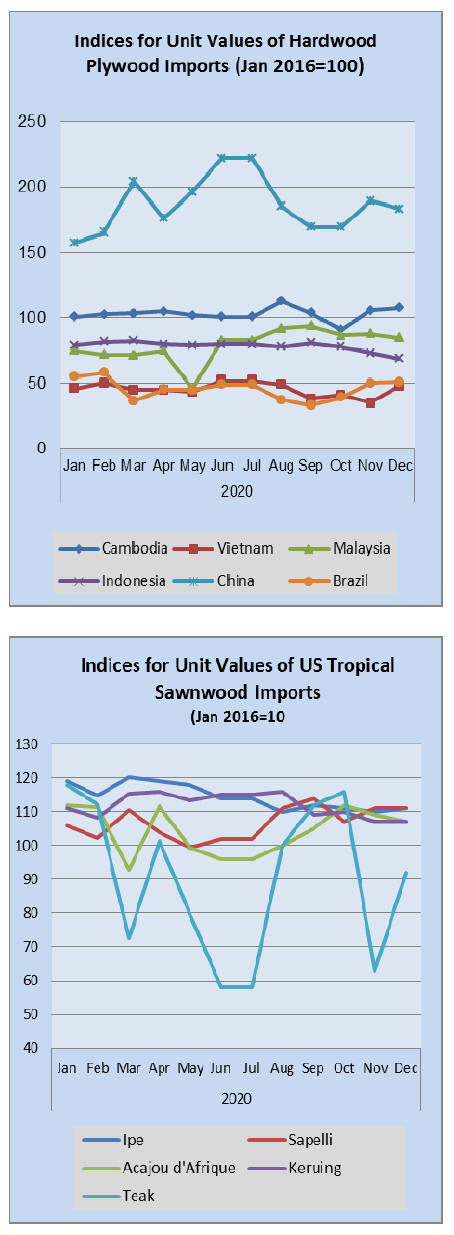|
Report from
North America
Housing starts fall for first time since August
The US Census Bureau reported home builders started
construction on homes at a seasonally adjusted annual rate
of 1.58 million units in January, representing a 6% decline
from the previous month. Compared with January 2020,
housing starts were down roughly 2%. Building permit
applications, however, were the highest since 2006.
A slowdown in the construction of single-family homes
prompted the decline in housing starts in January. Singlefamily
starts were down 12% nationwide, whereas
multifamily starts were up 16%.
Regionally, the Northeast was the only part of the country
where housing starts were up on a monthly basis in
January, with a 2.3% increase. The Midwest, meanwhile,
saw the biggest drop in starts, with a 12% decline,
followed by the West (down 11%) and South (down
2.5%).
Canadian housing starts soar 22.7% in January
The Canadian Mortgage and Housing Corporation
reported that housing starts were trending at 282,428 units
in January, up 22.7% from 229,350 units in December.
Nationally urban housing starts increased by 24% to
193,328 units in January and single-detached urban starts
increased by 38% to 73,549 units.
Record low supply of existing home for sales weighs
on market
US home sales rose unexpectedly in January despite tight
inventories boosting house prices. Sales of existing homes
in January increased 0.6% compared with December 2020
according to the National Association of Realtors.
Sales ended the month at a seasonally adjusted, annualised
rate of 6.69 million units, which was almost 24% higher
compared with January 2020. That is the second-highest
sales pace since April 2006.
The lack of supply in the face of strong demand continues
to push home prices higher and higher. There were 1.04
million homes for sale at the end of January, a 26% drop
from a year ago.
January 2021 saw existing-home sales in the Northeast fall
2.2while existing-home sales in the Midwest inched up
almost 2%. Existing-home sales in the South grew 3.2but
existing-home sales in the West fell 4.4%in January
compared to a month earlier.
See;
https://www.nar.realtor/newsroom/existing-home-sales-tickup-0-6-in-january
Manufacturing output growing despite COVID setbacks
US manufacturing output grew a bit slower in January as
the coronavirus caused more work disruptions but
companies are still expanding rapidly and anticipating a
stronger economy in 2021.
The Institute for Supply Management said its
manufacturing index slipped to 58.7% in January from
60.5% in the previous month. December¡¯s reading was the
highest in almost 2½ years and was close to a 16-year
peak. Readings over 50% indicate growth, and anything
over 55% is considered exceptional. Sixteen of the 18
industries tracked by ISM expanded in January,
unchanged from the prior month.
The best news in the report was an increase in the
employment barometer to 52.6% from 51.7% ¡ª the
highest level in 20 months.
See:https://www.ismworld.org/supply-management-news-andreports/reports/ism-report-on-business/pmi/january/
Consumer confidence dips
US consumer sentiment unexpectedly fell in early
February amid growing pessimism about the economy
among households with annual incomes below US$75,000
even as the government is poised to deliver another round
of COVID-19 relief checks.
The easing of sentiment reported by the University of
Michigan was also despite a decline in new coronavirus
cases and an improvement in the distribution of vaccines.
This, says the university report, underscored the so-called
K-shaped recovery, where better-paid workers are doing
well while lower-paid workers are losing out.
The government provided nearly US$900 billion in
additional fiscal stimulus in late December which included
direct cash payments to lower- and middle-income
households and an extension of a weekly Federal
unemployment supplement.
See:
http://www.sca.isr.umich.edu/
Home improvements ¨C more to be spent in 2021
In a recent poll, almost all respondents say they will spend
as much or more time on home projects this year
compared to 2020.
This was the conclusion of a survey released by Axiom
Marketing asking consumers about their recent projects,
accomplishments and home improvement plans for the
year ahead.
See:
https://axiomcom.com/2021-homefront-insights-survey/
and
https://www.woodworkingnetwork.com/markets/homeimprovement-survey-respondents-spend-more-projects-2021

|